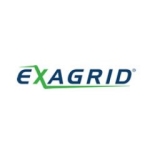What is our primary use case?
We use the solution as a backup and to restore applications.
It's business continuance versus disaster recovery. Business continuance is you lose some data at your data site or maybe get data corruption, due to malware, or somebody deletes something by mistake, and you've got to restore it. You go to your backup to do that, and that's business continuance. Disaster recovery is if your whole site's gone down and you need to run at another site. For business continuance, you need a product like Data Domain Power Protect.
How has it helped my organization?
There are capital expense benefits that you get if you're running into issues where typically, you're charged by how much physical space you take up. Data Domain or PowerProtect will save you expenses as you have physically less space. In other words, what deduplication and compression do, is, if you have 100 terabytes of physical storage and you're backing that up, maybe you're only backing it up to 30 physical terabytes on the appliance, on the Data Domain PowerProtect device. So you're saving a lot of physical space in your rack.
What is most valuable?
It has a feature where, instead of having a separate media server for backup to run the backup software, Dell now provides a version that runs it all together, so you don't need a separate media server.
It has a feature called deduplication which saves you space in your rack. If you run somewhere else and you get charged for physical space. this avoids using extra space, and that's a big plus.
The compression aspect of the solution is great.
It is very reliable. They have 99.999% uptime.
The product is scalable.
What needs improvement?
Nothing comes to mind in terms of improvement. It serves its purpose. That said, if they could develop higher algorithms to make it more efficient, that would be great.
Usually, with the backup, the issue is how fast it can do it. As network speeds improve, the solution improves. It has to keep up with the available network speeds, however. For example, a 100-gigabit ethernet. They need to keep up with the advancements in network speeds, and ethernet speeds. If they keep up, instead of taking five hours to back up your daily workload, you may do it in three hours.
It can be complex to implement.
For how long have I used the solution?
I've used the solution for five to six years.
What do I think about the stability of the solution?
The solution is stable. The products are very, very reliable. They're designed for what they call 99.999% at least, which is less than an hour a year of downtime.
It is very reliable.
What do I think about the scalability of the solution?
They're scalable. The Dell and HPE solutions are all scalable, and they can have up to, nowadays, multi-petabytes.
You can go to the cloud as well to scale even further. You can have some of your data in the data center, and you're physically owning this product in your data center, and at some point in time, if you want to archive some of that, it goes to the cloud. That's usually through what they call an S3 interface, which is an Amazon AWS protocol. Amazon AWS has an interface to their S3 storage. All the vendors now have an interface regardless of whatever cloud it goes to; they have expandability scalability up into the cloud through this S3 interface that was made popular by Amazon Web Service, AWS.
We're a vendor that sells the solution. Our clients decide when and if they scale.
How are customer service and support?
I think it's a well-established product, and everybody understands the functionality.
How would you rate customer service and support?
Which solution did I use previously and why did I switch?
We do deal with various other solutions. There are five others on the market. One is ExaGrid. IBM has another.
If somebody writes an RFQ, like a government agency, that says, "You guys have to tell me what's best," all those companies will be competing against each other.
How was the initial setup?
The setup can be complex.
You only need one person to implement the solution.
What about the implementation team?
Usually, we recommend that professional services do the implementation. These solutions get more complex with all the different appliances and devices. We usually recommend that we include professional services to do it for the customer.
What was our ROI?
We have seen an ROI. You get the functionality, period. And whether you need something that's going to do the deduplication and compression is the additional benefit of this type of device. Companies can't run without a backup device. This is a backup target for your backup software, so you need to back up or lose your business.
What's my experience with pricing, setup cost, and licensing?
There are many different licenses, so you pay for what you need. There are various aspects you can add on, like extra speed, or something just for reading data. There are licenses to do replication as well. You have a lot of options.
What other advice do I have?
We are dealing with the newest version of the solution. We sell it. We are not end-users.
I'm an engineer that helps with the sales teams. I'm the one who recommends these products and puts them together as a solutions architect.
One client is going from two to three shelves, or 60 to 90 terabytes.
The solution is comparable to other offerings and vendors. However, I've been pleased with its capabilities. I'd rate it nine out of ten.
Which deployment model are you using for this solution?
On-premises
Disclosure: My company has a business relationship with this vendor other than being a customer.


















